black gum (Nyssa sylvatica)
Nyssaceae, the tupelo sour gum family
How to recognize black gum. The leaves are alternate in arrangement, simple in complexity, with entire margins. The shape is obovate (the ob part of the word denotes that the wider portion is near the tip).
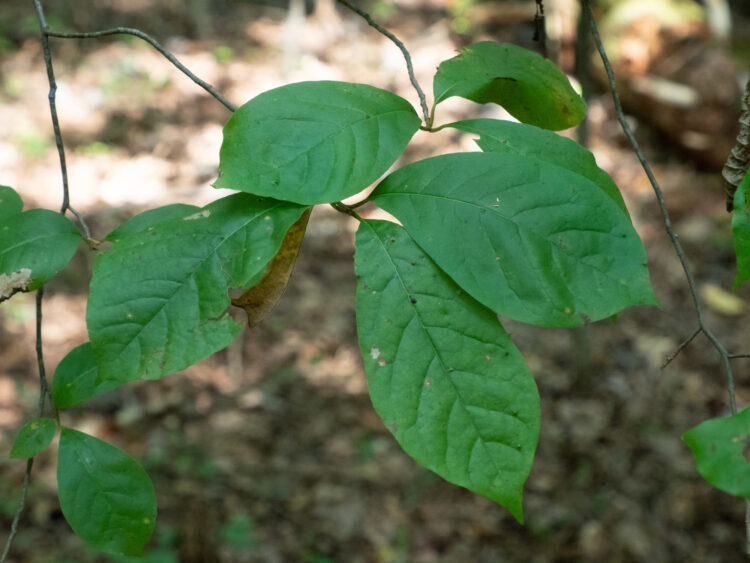
black gum
The leaves have a vaguely dogwood-like look, but they arrangement is alternate.
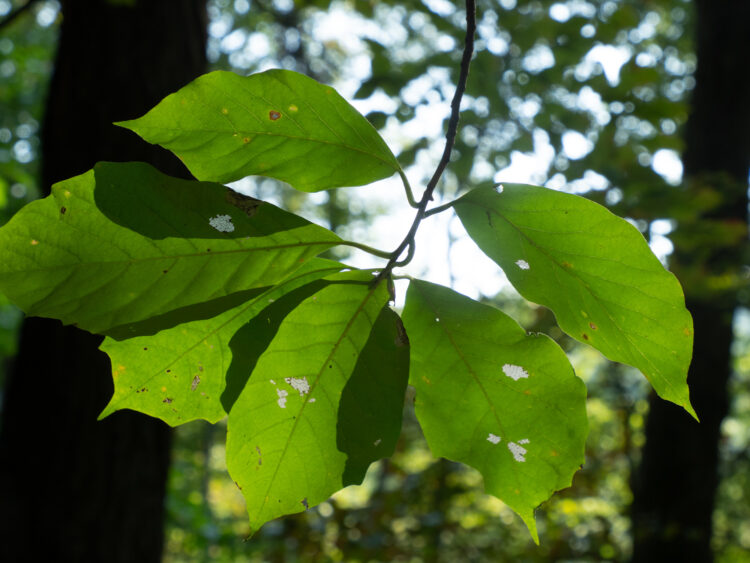
The entire margin helps us tell it apart from some look-a-likes.
Bark. It’s deeply checkered, with an alligator pattern.
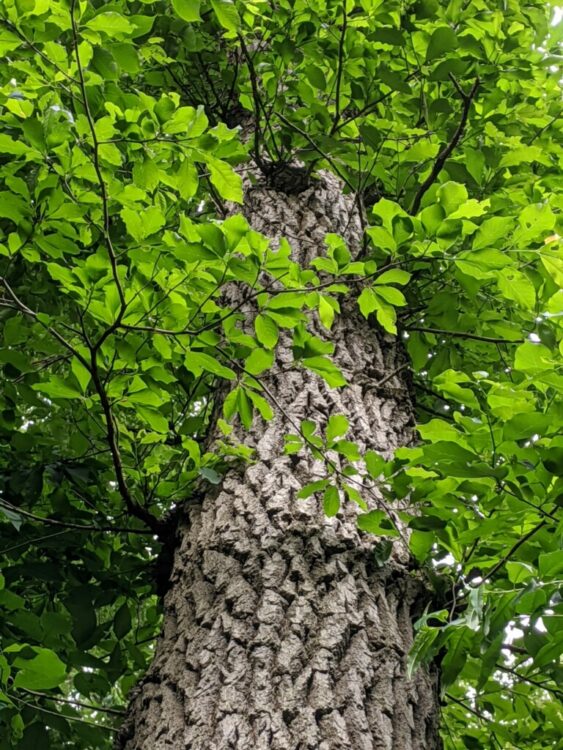
Black gum bark has an alligator pattern.
Photo by Kirsten Packer
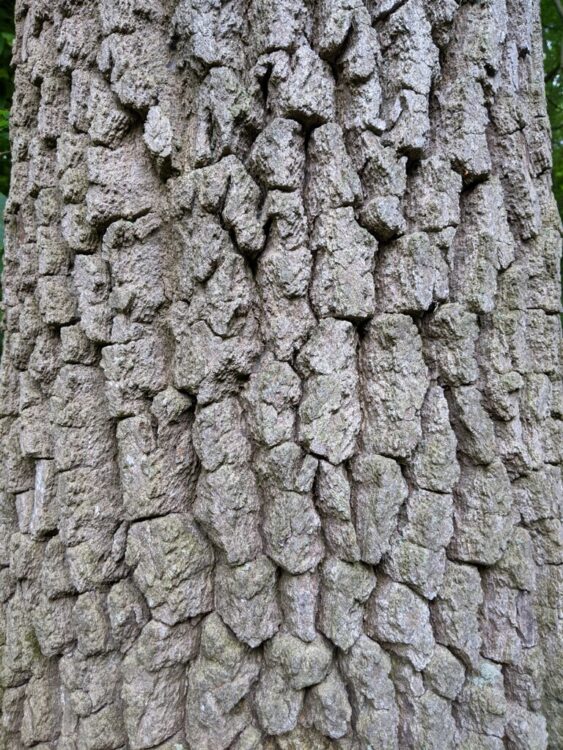
Black gum bark has an alligator pattern.
Photo by Kirsten Packer
In the winter. Nyssa twigs have a true terminal bud. The leaf scars are roughly triangular, with 3 very prominent bundle scars.
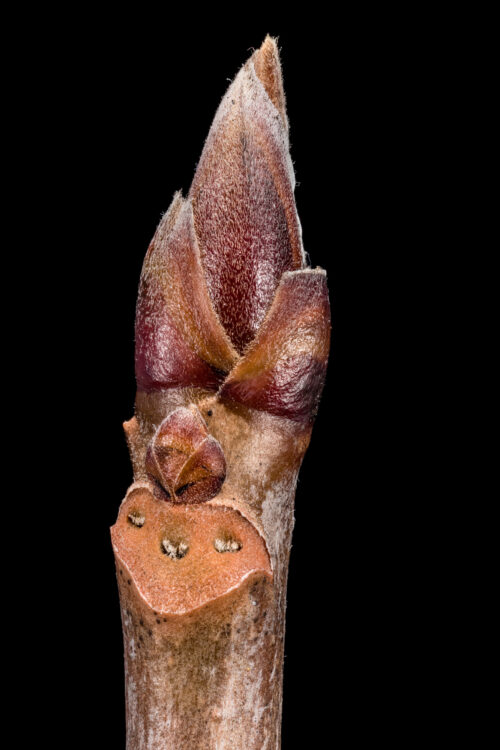
Nyssa leaf scars have 3 prominent bundle scars.
A longitudinal section of the twigs show a striking feature: diaphragmed pith!
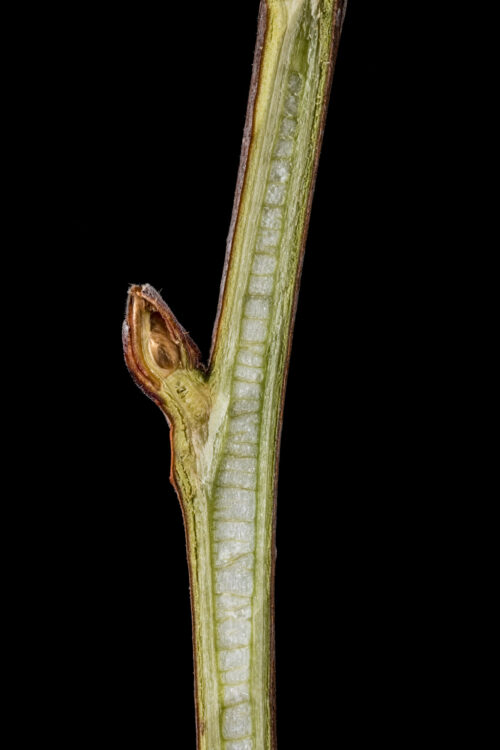
Be still, my heart: diaphragmed pith!!!!
Where to find black gum. E. Lucy Braun, in The Woody Plants of Ohio (1961, 1989; The Ohio State University Press) tells us that black gum is a “Tree of various habitats, dry or moist, most frequent in non-calcareous soils.”
Scanned Image from an Old Book
(Flora of West Virginia, by P.D. Strausbaugh and Earl L. Core)
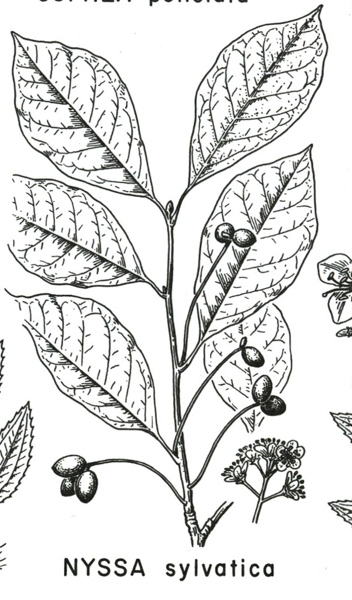
black gum
Ooh ooh, I have a question.
Can you translate and explain the scientific name please?
The genus name, Nyssa, refers to a Greek water nymph; the specific epithet sylvatica refers to its woodland habitat.
